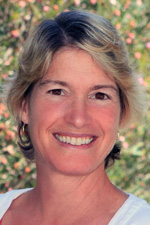By Eva Trieger

LA JOLLA, California –This is not your father’s sukkah! Joshua Foer fondly remembered the nearly annual sukkah construction in his parent’s home, though he learned that he was in the mere 5 percent of American Jews who do so. When nostalgia set in, this secular Jew had a flash of inspiration. Teaming up with Roger Bennett, cofounder of the competition, Sukkah City blossomed into fruition. Oxbow Lake film director and producer, Jason Hutt, was the lone cameraman for this daring documentary.
Drawing from Leviticus 23:42 they developed a throw down: an international sukkah building contest that would occupy Union Square in New York City for the Festival of Booths, Fall 2010. Working for a few intense months, Jason Hutt, captured the entire project in an exciting, suspenseful and brilliant 67 minute film, entitled Sukkah City. Hutt’s film will be featured at the San Diego Jewish Film Festival, airing February 10th and 16th.
The holiday of Sukkot requires Jews to leave the comfort of their homes and move into temporary structures where we are required to eat meals, shake a lulav, a symbol of the four species, hold the etrog, and look at stars through a roof made of organic plants that have grown out of, but are no longer attached to the ground.
A team of judges and jurors comprised of architects, engineers, students and teachers collaborated to select 12 of the 600 entries. In order to be considered worthy, valid entries, the sukkah must conform to halacha (Jewish law). Roger Bennett informed the committee of the guidelines for the creation of a kosher sukkah:
The roof cannot be made of food
One must be able to see the stars through the ceiling
It must be made of organic material
The roof should provide more shade than sun
Beyond these rules, designs were limited only by the imagination. And many contestants allowed themselves free rein. From bubbles, to a cocoon, to shims, to wire, to cardboard signs, these incredible structures were first designed, voted upon, and then constructed. Finally, the twelve winning design teams were given a budget of $10,000 for construction and installation.
The documentary illustrates the machlokos, differences of opinions, on the parts of the judges. The judges were Jews and non-Jews, male and female, collected from over 15 countries. However, what amazed this reporter was the fact that the ad hoc committee was able to reach a consensus. Tempers flared and people seemed intractable, but in the end, the winning designs were determined by majority rules. We all know the adage that if you have two Jews, you get three opinions. It is possible, according to Hutt, that the non-Jews were free of “time/history/traditional” experience of a sukkah, and therefore enjoyed greater latitude in their designs.
Equally surprising was the amount of planning, care and intense efforts that went into building something that is intentionally ephemeral. The expenditure of an enormous amount of energy went into each and every structure and the teams were committed and wholly devoted to completing their sukkot and seeing them in Union Square. While aesthetics drove some of the designs, function informed others. One designer stated that the sukkah is “a filter to reflect on the outside world.” Another team relied on signs taken from homeless people to create their sukkah’s wall, seeing this is as the quintessential message of “temporary”. The sukkot allow us to “viscerally understand impermanence.”
One fascinating aspect of the competition was the scope of contestants. Entries came from over fifteen countries. The builders were intrigued by the number of rules. One stated that the rules of the structure determine its function. Another creator felts that the “constraints make us more creative.” Most often the designers shared the love of a challenge of an open-ended structure that had roots dating back over 3,000 years. How could they make it meaningful in the 21st century?
Another happy surprise, was that a,ccording to Jason Hutt, the cameraman, there was no backlash or animosity from New Yorkers, feeling marginalized or threatened by the installation of these booths commemorating a Jewish holiday in such a public place. To the contrary, over 200,000 visitors of all races, ethnicities and religions visited the display and actively engaged with the designers and builders, asking questions, some debating the “kashrut” of each.
I watched from the edge of my seat when the Installation day arrived. The architects and designers carefully brought their creations to Union Square and had seven hours to erect their sukkot. Time was running out, and pieces were breaking, parts were not fitting neatly, tensile strength was miscalculated. And then came the amazed onlookers!
Curious yeshiva boys, cabbies, families, even a cameo by sex therapist Dr. Ruth Westheimer, made the entire process a beautiful culmination of symbolism, observance, aesthetics and mutual respect. The project succeeded in its goal, according to Hutt. It started a conversation, and beyond just fulfilling the rules, it showed how the sukkah is relevant today.
I could not help but feel a bit let down and frustrated for the designers and builders who would have to disassemble and destroy their beautiful booths. They literally gave birth to something fantastic but as intended, it demonstrated the fragility of life and our need to appreciate the walls we inhabit and those we create.
The San Diego Jewish Film Festival runs Feb. 6-16. Contact the JCC box office for tickets.
*
Trieger is a freelance writer specializing in coverage of the arts. She may be contacted at eva.trieger@sdjewishworld.com